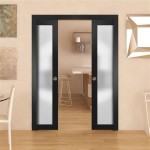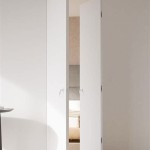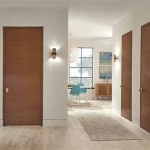How to Cover Cinder Block Walls Interior DIY
Cinder block walls, while durable and cost-effective, can often feel stark and unfinished. Their rough texture and porous surface may not be the most aesthetically pleasing. Fortunately, covering cinder block walls is a relatively simple DIY project that can dramatically improve the overall look and feel of your space. This article will explore various methods for effectively covering cinder block walls, transforming them into a more polished and inviting interior feature.
Painting
Painting is the most straightforward and cost-effective way to cover cinder block walls. It allows for a wide range of colors and finishes, enabling you to customize the look of your space. However, proper preparation is crucial for a successful paint job.
Before applying paint, ensure the cinder block wall is clean and free of debris. Use a wire brush to remove loose mortar and dust. Consider applying a primer to seal the porous surface, providing a smoother base for the paint and preventing the paint from being absorbed unevenly. Applying a primer also improves the adhesion of the paint. Choose a paint specifically formulated for masonry surfaces, as it is designed to withstand the unique characteristics of cinder blocks.
To further enhance the visual appeal, consider incorporating painting techniques like faux finishing or using textured paints. These techniques can add depth and dimension to the walls, mimicking more expensive materials like stone or wood.
Wall Paneling
Installing wall paneling provides a more substantial and aesthetically pleasing covering for cinder block walls. This method offers various styles and textures, from traditional wood paneling to contemporary materials like PVC or composite panels.
When choosing wall paneling, factor in the decor and style of your space. For a rustic feel, consider using natural wood paneling. For a modern aesthetic, opt for sleek PVC panels. Before installation, ensure the cinder block walls are clean and level. Use a stud finder to locate wall studs for secure attachment of the paneling. Depending on the type of paneling chosen, use appropriate fasteners such as nails or screws for installation.
Wall paneling can add warmth and texture, and some panels are even designed to mimic the look of natural stone or brick. This can be a cost-effective alternative to using actual stone or brick, making it a popular choice for homeowners seeking a more luxurious look.
Wallpaper
Wallpaper is a versatile option for covering cinder block walls, offering a wide array of patterns, textures, and colors. It can easily transform the look of a space, adding a touch of personality and style.
Before applying wallpaper, make sure the cinder block walls are clean and smooth. If necessary, use drywall compound to fill any indentations or imperfections. Measure and cut the wallpaper to size, ensuring proper alignment. Apply wallpaper paste according to the manufacturer's instructions, and carefully position the wallpaper on the wall, smoothing out any air bubbles. Avoid using wallpaper on damp or humid areas as it can cause issues like mold growth.
Wallpaper provides a distinct look and can easily complement various decor styles. It can create an accent wall, add a pattern to a room, or even create the illusion of a larger or more luxurious space.
Other Options
Besides the aforementioned options, other methods can be used to cover cinder block walls. These include:
- Drywall: Drywall installation involves applying sheets of drywall to the cinder block walls, providing a smooth and uniform surface for painting or wallpapering. This approach can be more labor-intensive but offers a durable and versatile finish.
- Wainscoting: Wainscoting is a decorative paneling typically installed on the lower portion of a wall, adding visual interest and detail. It often combines wood paneling with molding and trim, creating a more refined aesthetic.
- Fabric Wall Covering: Applying fabric to walls is a unique and creative option. It offers a soft, tactile texture and can create a cozy and inviting atmosphere. This approach is best suited for areas with low humidity and moderate traffic.
No matter the chosen method, remember to choose materials that complement the existing décor and style of the space. Consider factors like durability, maintenance, and budget before making a decision. Covering cinder block walls is a DIY project that can significantly enhance the appearance and feel of any room.

10 Ways To Cover Concrete Walls In A Basement Finish

22 Fun And Ideas For Diy Cinder Block Projects

10 Ways To Cover Concrete Walls In A Basement Finish

Rubbing Drywall Compound Onto A Cinder Block Wall Before You Paint Is An Easy That Will Fill All The Porous Holes Make Painting Lot Smoother

Five Ways To Cover Exterior Cinder Block Walls Today S Homeowner

How To Cover Exterior Cinder Block Walls 4 Ideal Options

Block Walls Interior

10 Ways To Cover Concrete Walls In A Basement Finish
:strip_icc()/100160338-94183feb6e2b47c98f2d931608ce3352.jpg?strip=all)
18 Ways To Make Your Basement Walls Beautiful

How To Cover Exterior Cinder Block Walls 4 Ideal Options
Related Posts








